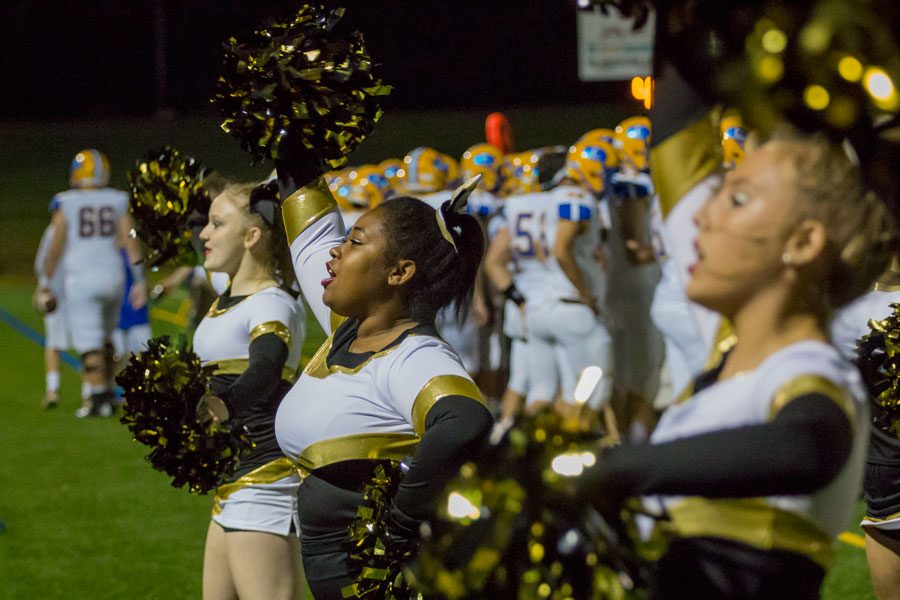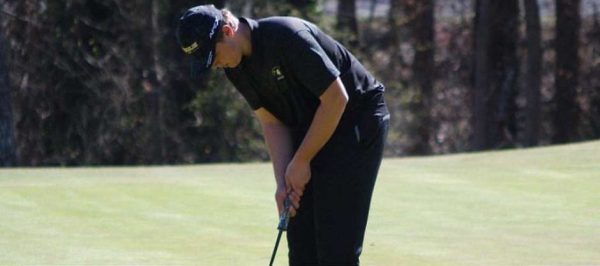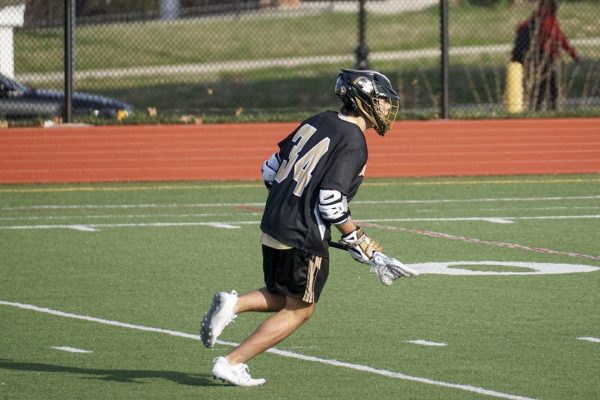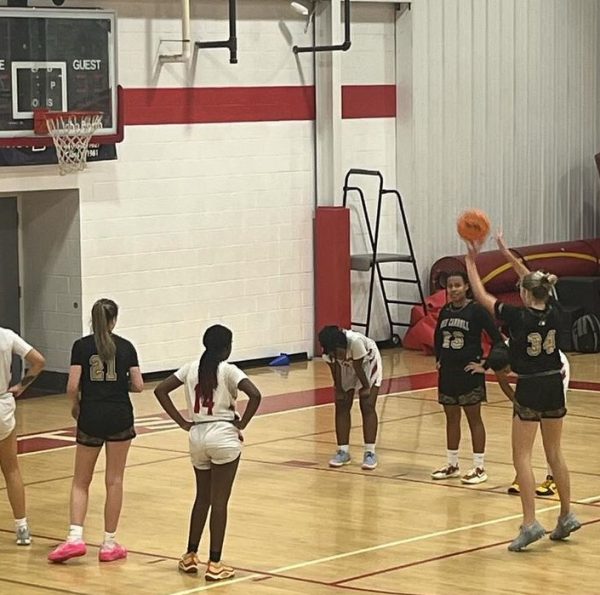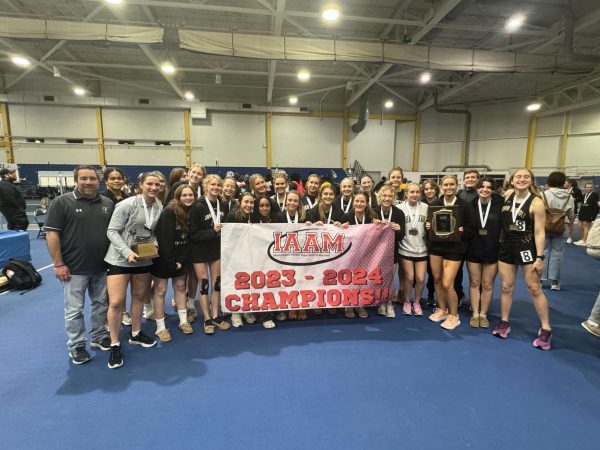Blood, Sweat, and Cheers
Cheerleaders work to overcome obstacles and challenges, while keeping their spirits high
Senior Jayla Ferguson cheers during the football game on Sept. 8 against Loyola Blakefield. Ferguson is a four-year member of the cheerleading team.
Junior Claudia Bruce’s legs are about to give out, her thighs ache, and her calf muscles scream, but she pushes through the routine. Bruce lifts her teammate into the air, supporting the flier at her feet, and manages a smile for the crowd. While one cheerleader completes a tumbling pass, Bruce forces her legs to remain steady as she lifts yet another girl into the air. She is only half-way through the routine and already breaking a sweat, but Bruce and her teammates know their countless hours of practice will carry them through.
When you think of athletic intensity, cheerleading may not be the first thing that comes to mind, but the team puts in effort each week by following a demanding practice schedule consisting of conditioning and drills. They do this to keep up with their skills and make sure each move is done as cleanly as possible.
According to senior Jayla Ferguson, a four-year member of the squad, these practices are packed full of different activities. “Before practice we run, and then we stretch. Stretching consists of lunging, splits, arms, wrists, and then we get into the basics of practicing for sidelines, and that’s just cheer after cheer after cheer,” she said.
Despite the hard work, many girls say they enjoy cheerleading because of the school spirit that comes with it. “I like cheering for the games, especially when the student section is really big, and when we win. It is fun to be there to support the team and represent JC,” Bruce said. The team cheers at each home football game.
Cheerleading coach Lauren Fitzpatrick recognizes the sport comes with many physical challenges, but believes the main difficulty lies within each member of the squad. “The most challenging part is probably being able to just be comfortable with themselves, whether they’re messing up or falling or whether they’re falling in stunts, just to be able to recover and move on from it,” Fitzpatrick said.
Both Bruce and Ferguson agree the sport can be quite strenuous and often results in physical pain. Cheerleaders not only leave practice with aching muscles, but also sore throats because of the constant cheering. Cheerleaders are required to yell to the best of their ability at every practice.
“I cheered my Homecoming [game] last year without a voice and went to the dance without a voice,” Ferguson said.
Bruce wishes that people could see how hard the team works and recognize their effort. “Here, cheer isn’t as popular or people don’t pay much attention to it, because they’re there to watch the football game, not to be there for the cheerleaders,” she said.
Although the lack of recognition can be frustrating, Ferguson claims that the most difficult aspect of cheerleading is the potential dangers. “You have somebody’s life in your hands, literally, so that is the biggest challenge. When you put somebody in the air … Anything could go wrong,” she said. For example, two years ago, five members of the team suffered concussions from stunting alone.
Bruce says the hardest aspect of cheerleading is keeping a stable team. “A lot of people can’t seem to commit their time, and then they just drop, and it is difficult because then we just have to move everything around. For the Pep Rally, we had someone who left right before, and it wasn’t a big deal because we hadn’t gotten that far in our routine, but it was still an obstacle,” Bruce said. Last year, there were 18 girls on the team, but currently, they are down to 11.
This drop from 18 girls to 11 is part of a larger decline in numbers. Three years ago, the team was split between JV and varsity, but for the last two, they’ve been combined into one. In addition, 10 years ago, the 2007 fall cheerleading team had 37 girls across JV and varsity, according to the Pacificus.
According to Fitzpatrick, the smaller team does not make a difference this season. “As far as the team size these year, it is more of a growing season. I know a lot of girls decided not to come back who cheered last season. I’m taking this season as a growing season, kind of going back to fundamentals and teaching and building,” she said.
Bruce believes another reason that they have lost teammates is the popularity factor. Instead of being proud of participating in cheerleading, some think it is something to be embarrassed about.
“They think that they’ll get looked down upon for being a cheerleader – maybe not looked down upon, but made fun of or embarrassed to be out on the field and not in the bleachers with their friends at games,” Bruce said.
She hopes that after their Pep Rally routine on Oct. 6, the image of cheerleading will change. “I think we definitely pulled [the Pep Rally] off well. We had a three hour practice to prepare for it on a Friday night. Everyone came, and we put in our hardest effort, and it all came together well,” Bruce said.
In the end, both Ferguson and Bruce agree that they love what they do. Although they say it can be grueling, Ferguson believes cheerleading is worth the challenges, especially when there is a positive team dynamic. Cheerleading is all about “knowing your girls, knowing their strengths and weaknesses,” Ferguson said.
Alyssa Kraus is the co-Editor in Chief of The Patriot and jcpatriot.com



